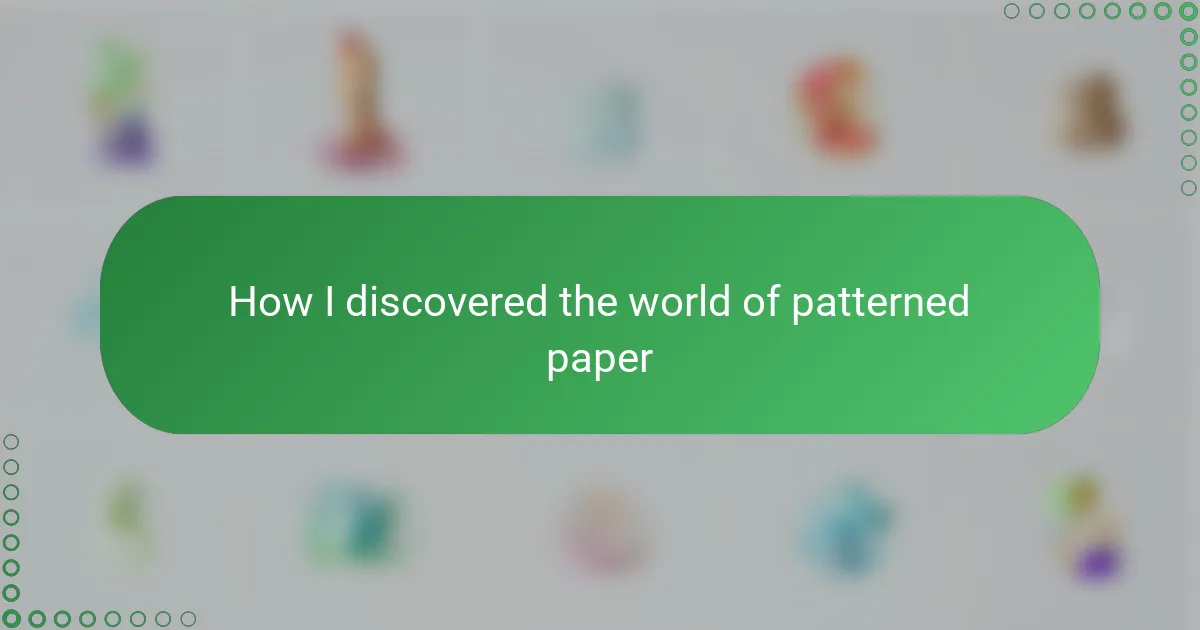Key takeaways
- Handmade paper crafts offer a unique tactile experience, transforming simple materials into expressive art.
- Understanding the variety of patterned paper, including textures and weights, enhances the material selection process for crafting.
- Essential tools like precision knives and sturdy cutting mats greatly improve the quality and enjoyment of paper crafting.
- Choosing patterned paper based on the desired mood and understanding scale interactions can elevate the overall craft project.

Introduction to handmade paper crafts
Handmade paper crafts have always felt like a warm invitation to slow down and get creative with simple materials. I remember the first time I held a piece of handmade paper—its texture, thickness, and unique fibers instantly sparked my curiosity. Have you ever wondered how such modest paper can transform into beautiful art that carries so much character?
Creating with handmade paper offers a tactile experience that’s hard to find elsewhere. Each sheet tells a story, reflecting the care and time invested, making every project feel truly special. For me, it’s this connection between craft and personal touch that keeps drawing me back.
What fascinates me most is how flexible handmade paper is—it adapts to various techniques, from stamping to folding, allowing endless possibilities. Starting with this foundation changed the way I approached paper crafts, turning a simple hobby into a heartfelt expression.
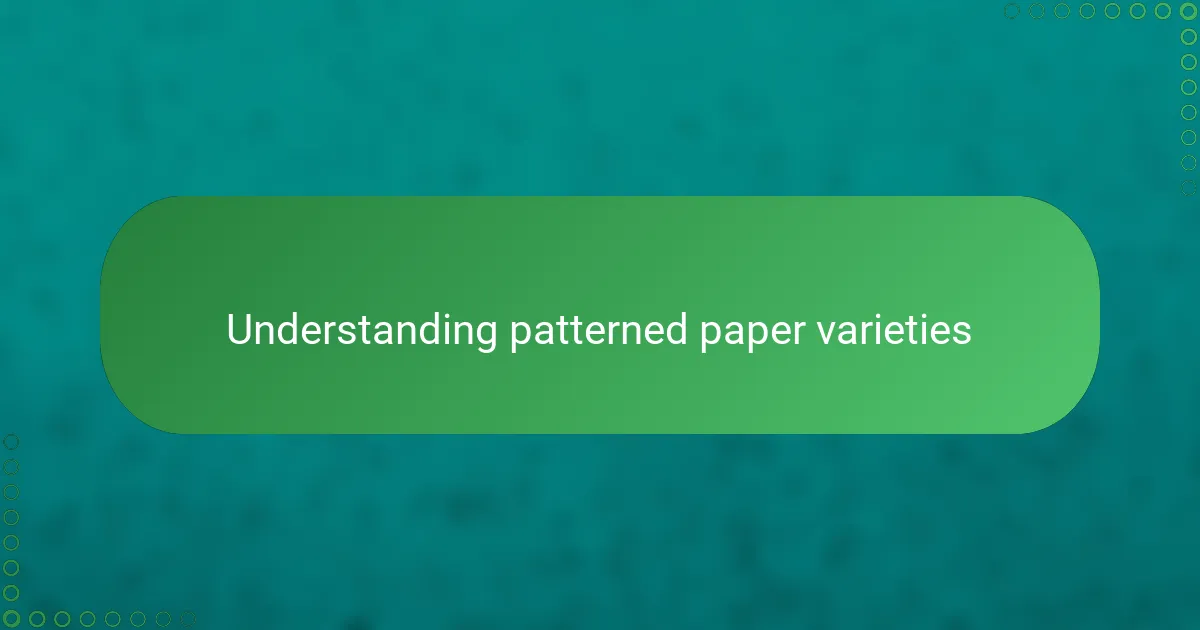
Understanding patterned paper varieties
When I first encountered patterned paper varieties, I was amazed at how diverse they could be. From floral motifs to geometric shapes, each type carries its own mood and personality. Have you noticed how some patterns feel playful while others exude elegance? That variety instantly expanded my creative toolkit.
What really caught my attention was the texture differences between patterned papers. Some are smooth and glossy, perfect for crisp cuts and layers, while others have a rougher, fibrous feel that adds depth and character to any project. I quickly learned that choosing the right texture can make or break the final look.
In my experience, understanding these varieties means paying attention not just to the design but also to the paper’s weight and finish. Thicker papers handle embellishments better, while lighter ones are ideal for delicate folds. This subtle knowledge transformed the way I selected materials for each craft, making the whole process much more enjoyable.
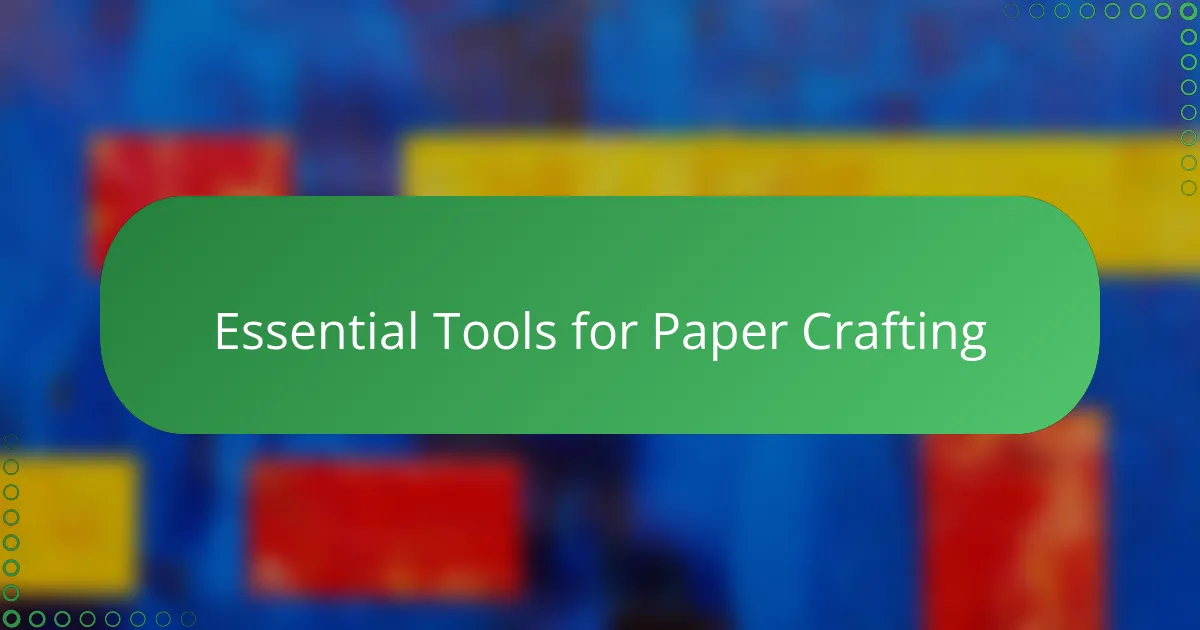
Essential tools for paper crafting
When I began exploring paper crafting, I quickly realized that having the right tools made all the difference. Scissors were my first essential purchase, but I soon discovered that precision craft knives opened up so many more possibilities for detailed work. Have you ever tried cutting intricate shapes with dull scissors? It’s frustrating, to say the least.
Another tool that became indispensable for me was a sturdy cutting mat. It not only protects my workspace but also gives me confidence to make clean, straight cuts. I remember the satisfaction of perfectly trimming patterned paper without worrying about ruining my table—such a small thing, yet it changed how I approached crafting.
Of course, adhesive tools like glue sticks and double-sided tape found their way into my kit fast. Choosing the right adhesive ensures your pieces stay put without warping the paper, especially with delicate patterns. Over time, I learned that a steady hand and the right glue create a seamless finish that elevates the whole project.
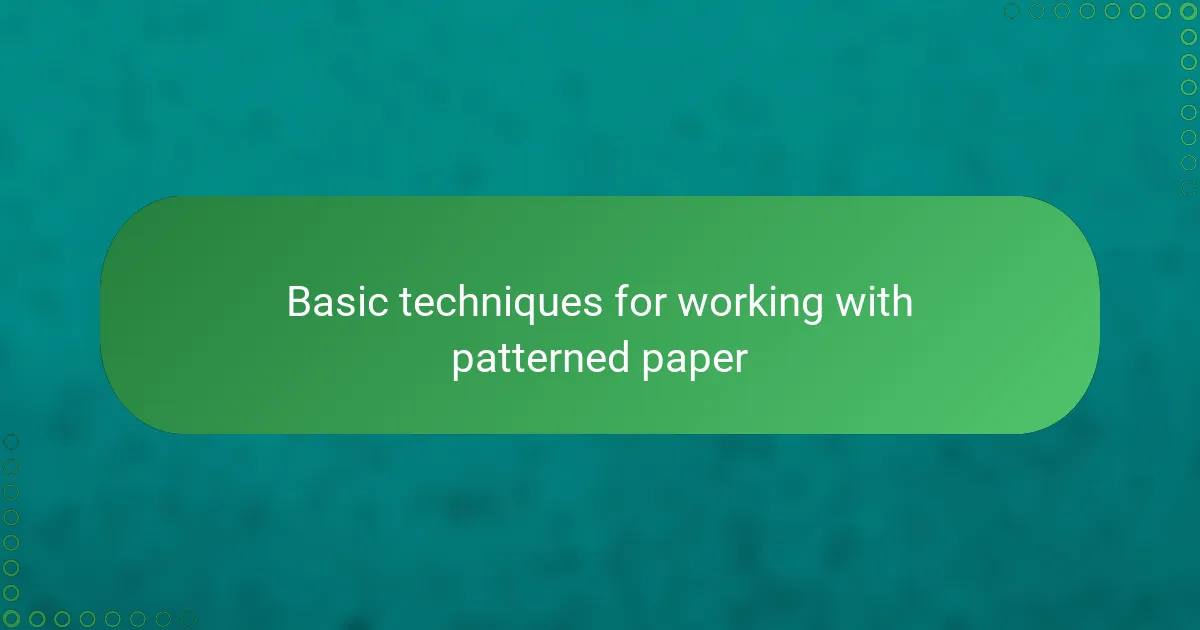
Basic techniques for working with patterned paper
One of the first techniques I mastered with patterned paper was layering. I found that juxtaposing different patterns creates depth and interest, almost like telling a visual story. Have you ever tried mixing a bold geometric print with a soft floral? The contrast can be stunning when done thoughtfully.
Cutting patterned paper requires a bit of patience and focus. I remember early on, my scissors kept catching the fibers, causing jagged edges that disrupted the design. Switching to a sharp craft knife and using a ruler for straight lines made all the difference—suddenly, those crisp edges enhanced the pattern instead of distracting from it.
Adhesion is another subtle art in working with patterned paper. Too much glue can wrinkle thin sheets, while too little makes the pieces lift or peel. Through trial and error, I learned to apply glue sparingly and press gently, preserving the paper’s texture and keeping the patterns vivid. It’s a small step, but it truly elevates the overall craft.
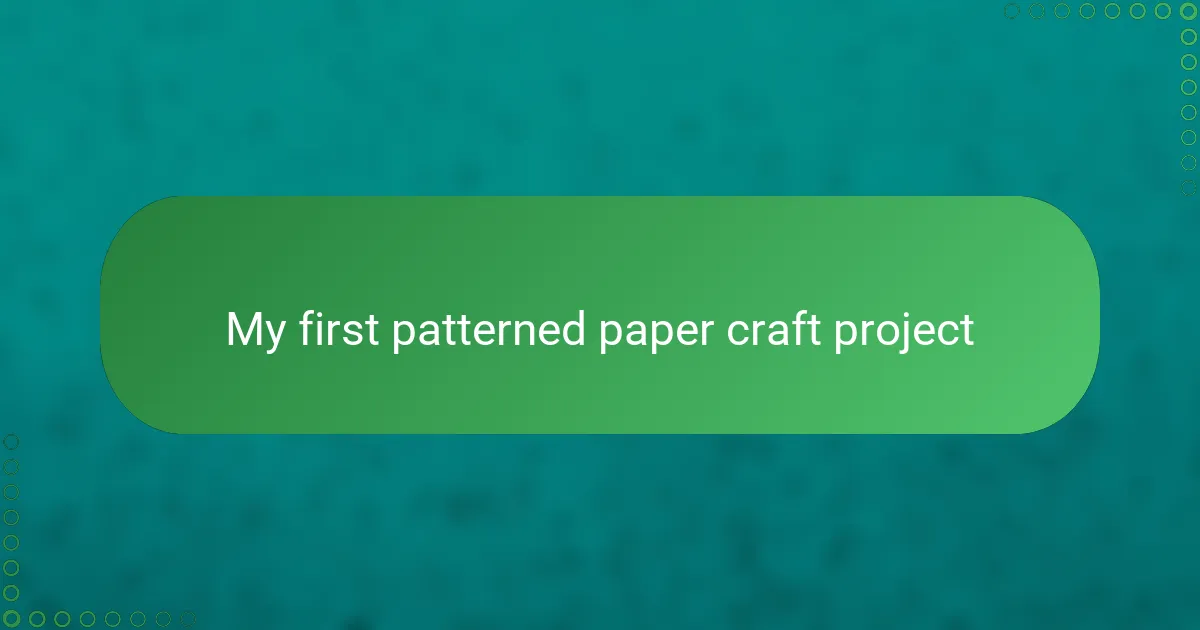
My first patterned paper craft project
My first patterned paper craft project was a simple greeting card, but I remember feeling both excited and nervous as I carefully chose a floral patterned sheet to feature. Have you ever hesitated before your first cut, wondering if you’d ruin the paper? That moment stuck with me—I realized how much respect this material deserved.
As I layered the patterned paper onto a plain cardstock base, I felt a surprising sense of calm wash over me. The rhythm of cutting, folding, and gluing slowly turned into a mindful ritual, and when I finally held the finished card, the swirl of colors and patterns felt like a little triumph. I didn’t expect to be so proud of something so simple, yet that project sparked a new creative confidence.
Looking back, I see that first craft as a gentle introduction to the possibilities patterned paper offers. It wasn’t about perfection but about exploring textures and designs—something I now chase with even more enthusiasm. Have you tried that first project yet? It might just be the start of your own journey, too.
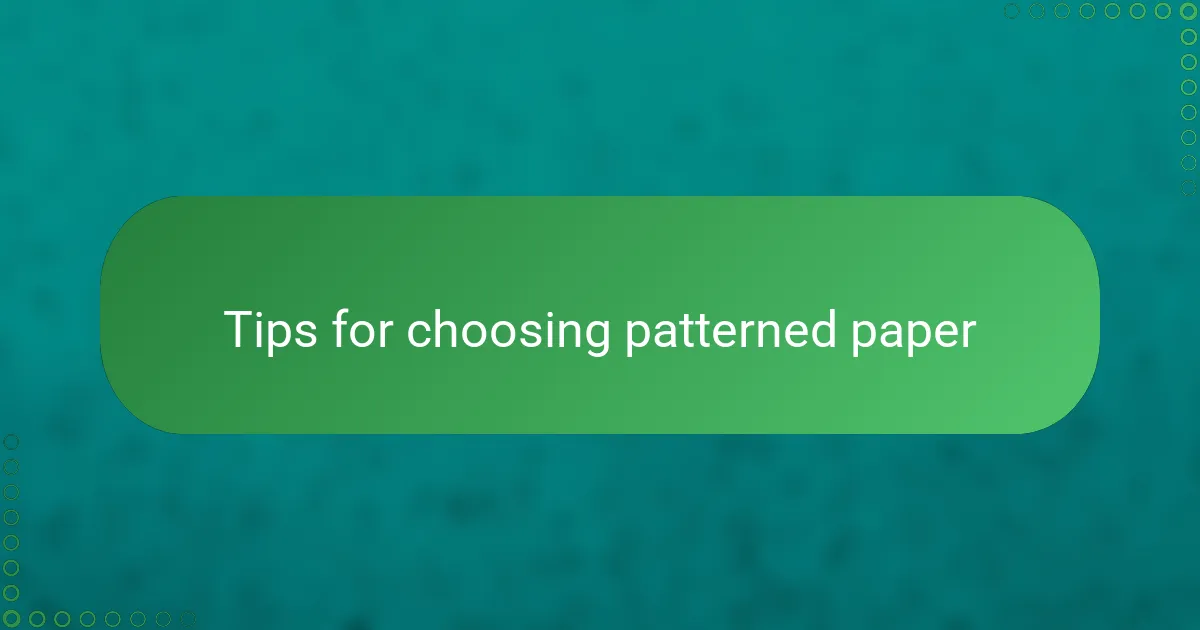
Tips for choosing patterned paper
Choosing patterned paper can feel overwhelming at first—there are so many designs and textures to consider. I’ve found that asking myself what mood or story I want to convey helps narrow down the options. Do I want something bold and vibrant to make a statement, or soft and subtle to create a gentle backdrop? That simple question guides my selection every time.
Texture plays a huge role too. I remember once picking a gorgeous floral print that was too thin for my project, and it wrinkled under the glue, which was frustrating. Now, I always check the paper’s weight and finish before buying, because sturdier papers often hold up better, especially when layering or adding embellishments.
Another tip I swear by is to consider how the pattern will interact with your project’s scale. Have you noticed how tiny prints can get lost on large surfaces, while oversized patterns might overwhelm smaller pieces? Matching pattern size with your project’s dimensions makes a big difference in the final look—and trust me, that little detail elevates any craft from just “nice” to truly memorable.

Creative ideas with patterned paper
One of my favorite ways to use patterned paper is by creating layered collage art. I love cutting out different shapes and patterns, then arranging them like a puzzle until something clicks visually. Have you ever noticed how simply overlapping a bright floral print with a subtle stripe can completely transform a piece? It feels like uncovering hidden stories within the paper itself.
Another idea that really excited me was making custom bookmarks. Patterned paper adds such a charming touch, especially when paired with tassels or hand-drawn details. There’s something about turning a small scrap of paper into a useful and beautiful object that makes me appreciate these designs even more. I often gift these bookmarks, and seeing someone’s surprise over something so simple is truly rewarding.
Finally, I’ve found that patterned paper is ideal for embellishing handmade journals or scrapbook covers. Just a strip here or a bold patch there can turn a plain book into a treasured keepsake. Have you ever held a journal covered in your favorite patterns? That personal connection, crafted with your own hands, makes the paper come alive in ways store-bought items never could.
